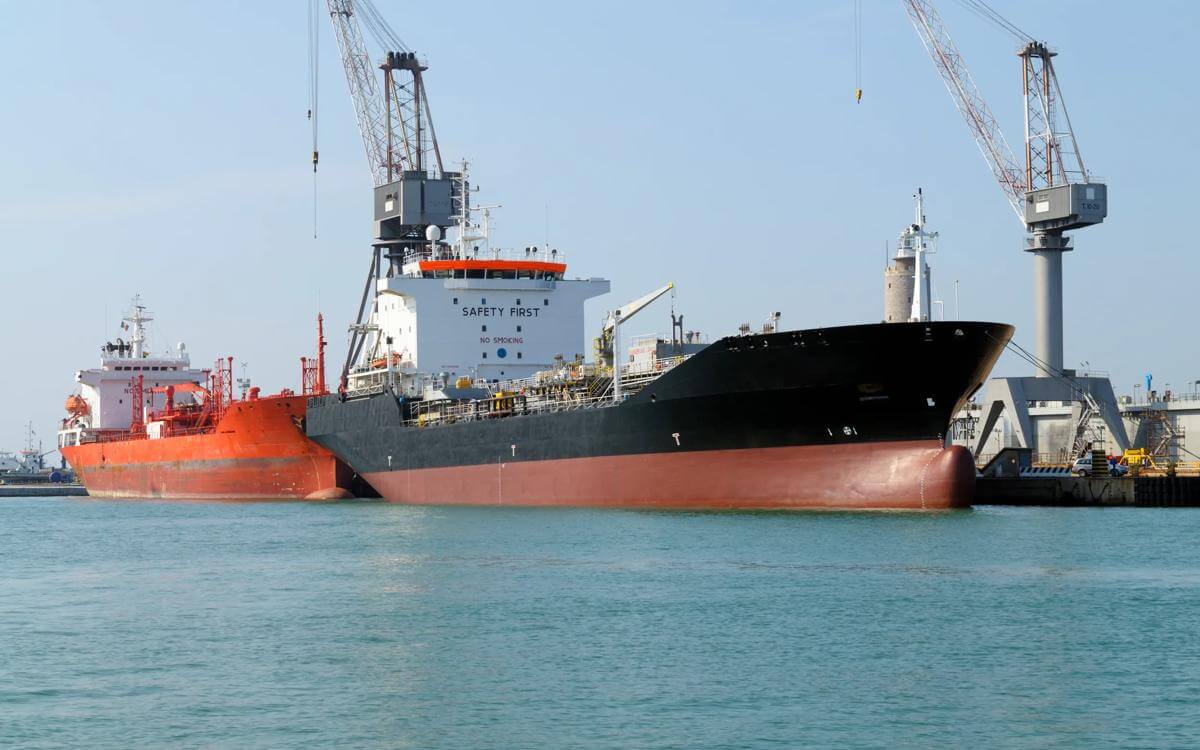As we reflect on 2024, five main areas have emerged as significant drivers of market losses, and these issues are expected to persist into 2025. Key factors include the Francis Scott Key Bridge (Baltimore bridge) collapse, Russian aviation claims, and COVID-19 business interruption (BI) losses.
Natural catastrophes have also played a major role, with events such as Hurricanes Helene and Milton, Spanish flooding, UK storms, and the Los Angeles wildfires causing widespread damage. Additionally, ongoing conflicts in Ukraine, Gaza, and Lebanon, coupled with broader political unrest, have further intensified the challenges facing the market.
It is highly unlikely that any London or international insurer/reinsurer is without exposure to at least one, if not several, of these issues.
Articles in this section:
- Baltimore bridge collapse.
- Russian aviation litigation.
- COVID-19 BI litigation.
- Natural catastrophes.
- Political risks.
Baltimore bridge collapse
Author: Colin Peck
In the early hours of 26 March 2024, the container ship MV Dali crashed into the Francis Scott Key Bridge near Baltimore, causing the bridge to collapse.
The crash caused the deaths of six workmen on the bridge and left another in a serious condition. The crew made a mayday signal, which has been said to have reduced the losses, as police prevented further cars from entering the bridge.
The third largest of its kind, the bridge spans nearly 1.6 miles in length and is 184ft tall, meaning that rebuilding it will be difficult, time consuming and very costly.
Claims associated with the collapse will easily surpass the US$1.5bn Costa Concordia loss, making it the highest ever marine loss.
Cause
While the cause is yet to be officially determined, the Dali has been reported as having experienced power issues. At the time of the crash, the ship had valid certification of its structural integrity and equipment functionality and had passed two recent inspections.
Due to the loss of power that the ship was potentially experiencing, there may be considerations as to whether the ship was seaworthy. If the ship was not seaworthy, this could be a breach of the carriage contract, and therefore other parties to the ‘maritime adventure’ may seek recovery of their liability through the breach. The ship’s voyage data recorder (VDR), the equivalent of a black box, can be studied to demonstrate when it experienced a malfunction leading to the loss of power and whether this impacted steering, propulsion or both.
Supply chain and disruption
The incident had a major impact on supply chains and caused significant disruption, preventing road traffic from passing over the Bridge and shipping activity in the port. Estimated to carry 11.5 million vehicles a year, this traffic needed to be re-routed. While there is a tunnel closer to the city serving as an alternative route, some vehicles such as lorries carrying hazardous materials, were prohibited from using it. Several merchant vessels were also trapped in Baltimore port.
Two alternative channels were opened and on 13 June, the channel was re-opened 11 weeks after the bridge collapse.
Claimants and coverage
The collapse has led to numerous claims and triggered potential coverage under the following types of policies:
- Wrongful death claims under life and/or workers compensation insurance by the families of the 6 deceased, likely to be capped at circa US$2.263m (non-economic losses);
- Compensation / loss of employees claim under workers compensation insurance by the deceased’s employer, Brawners Builders, circa US$170,000;
- Property damage and business interruption claim by the State of Maryland, owner of the Bridge, circa US$1.9billion plus US$141m in lost tolls revenue;
- US Government emergency response and pollution prevention costs, circa US$102m;
- City of Baltimore property damage and business interruption claims, unquantified, for damage to sewer lines, mitigation expenses and economic impacts;
- Longshoremen claims for lost wages due to closure of the port;
- Local businesses claims, trucking and related shipping businesses, for business interruption, supply chain and extra expenses;
- Cargo claims for damaged, lost, delayed or spoiled cargo;
- Chubb, the property insurer of the bridge, immediately paid US$350m and is now looking to recover that sum.
The MV Dali is understood to have Protection & Indemnity (P&I) insurance with the International Group of P&I Clubs, with the first US$10m being covered by the Britannia P&I Club. The other eleven members of the Club then cover up to US$100m. After that General Excess of Loss (GXL) reinsurance provides up to US$3.1 billion in cover. However, that amount of cover could be used up if all the claims are paid out in full.
The owners of the Dali are using the 1851 Shipowners’ Limitation of Liability Act (‘the 1851 Act’) to try to limit their liability to US$43m. However, it’s unclear if the US courts will allow that. The 1851 Act only applies if the incident happened without the owner’s knowledge or involvement, but given the known problems with the vessel in the months leading up to the incident, and while the threshold to deny this limitation is low, the US courts may decide the owners can’t use the limitation.
Claims by the US Government are not limited by the 1851 Act and so the owners have already settled the US$102m clean-up claim.
A judge has been assigned and it appears he plans to move quickly on the issue of whether the owners can use the limitation of liability under the Act, possibly during 2025.
Wider implications
Although the collapse has led to major claims and litigation likely to last for several years, it is unlikely to be a ‘black swan’ event that fundamentally changes the international marine insurance market.
Collisions between ships and bridges are not that uncommon. What makes this unusual is the sheer size of the vessel, the extent of the damage and the fact that it occurred in a major transport area. Litigation, appeals, and settlements are likely to play out over the next few years.
As the P&I exposure is spread across many reinsurers, individual reinsurer losses are likely to be manageable. Companies like Hiscox and Lancashire have already made similar comments publicly.
Going forward, rates are likely to rise on the P&I and cargo sides and the International Group of P&I Clubs may consider whether, in today’s world, the US$3.1bn of GXL cover is sufficient.
It is also likely that insurers will look at stricter underwriting, with increased scrutiny on ship inspections and maintenance. Those responsible for major ports and surrounding structures will need to reassess the level of physical protection currently in place to prevent or minimise such impacts.
If the US were to consider repealing the 1851 Act because of this collapse, that could have major implications for international shipping’s use of the US Eastern seaboard as it may become a very unappealing route for shipowners. It’s unclear whether the recent US election will play into this.
What is clear is that in today’s world of globalised trade, major ‘pinch points’ are developing where, if incidents occur, the knock-on effect is very considerable. The stranding of the Ever Given in the Suez Canal in 2021, the attacks by Houthi rebels in the Red Sea and Gulf of Aden, and now the Baltimore bridge collapse have all impacted world trade.
Russian aviation litigation
Author: Sam Zaozirny
Jurisdictional challenges
The Commercial Court heard two jurisdictional challenges this year as part of the ongoing disputes arising from aircraft stranded in Russia following Russia’s invasion of Ukraine.
The first of these was Zephyrus Capital Aviation Partners 1d Limited & Ors v Fidelis Underwriting Limited & Ors, where the Commercial Court rejected jurisdiction challenges brought by several international reinsurers that had sought to rely on Russian exclusive jurisdiction clauses (EJC) in their reinsurance contracts with Russian airlines.
Mr Justice Henshaw refused to uphold the EJCs, concluding that the claimant aircraft lessors were unlikely to receive a fair trial in Russia for several reasons, including, substantial Russian state exposure, the Russian courts being unlikely to determine certain issues objectively, Russian state interest in subrogated claims and the claimants being from what was seen (by Russia) to be ‘unfriendly foreign states’.
Despite the importance of comity between courts and upholding EJCs, Henshaw J concluded that the unlikelihood of a fair trial provided a strong reason to refuse a stay of proceedings.
Later in the year, in Aercap Ireland Capital Designated Activity Company & Ors v PJSC Insurance Company Universalna & Ors, Mr Justice Henshaw considered a similar application, this time regarding Ukrainian EJCs. Unlike the earlier application, he found that the Ukrainian EJCs were binding as the claimant owners of the aircraft had failed to show that there were strong reasons why the EJCs should not be enforced.
Henshaw J found that although the Ukrainian Court system had been affected by the ongoing conflict with Russia, outside of conflict zones the court system was almost functioning at the same level as before the war. The prioritisation of courts, by the Ukrainian state, as critical infrastructure suggested that power outages were unlikely to cause significant disruption and, while there may be practical difficulties with ensuring that witnesses would be available to give evidence, these issues were unlikely to be unmanageable. He was satisfied that the insurer defendants had valid reasons for wanting the cases to proceed in Ukraine, including the importance of Ukrainian law to the issues, the location of evidence and witnesses, and the likelihood of lower legal costs in Ukraine.
‘Mega trial’
On 2 October, the much anticipated ‘mega trial’ in the Russian aviation leasing claims started in the Commercial Court in London before Mr Justice Butcher. It was originally anticipated to last 12 weeks until Christmas but remains ongoing in early 2025.
The dispute involves the concurrent trial of six actions brought by many of the world’s leading aviation lessors (following the non-return of their leased aircraft by Russian airlines) including AerCap, Dubai Aerospace Enterprise (DAE), Falcon 2019-1 Aircraft, FDAC Aircraft Trading, Global Aerospace, and Merx Aviation, against many leading insurers including AIG, AXA, Allianz, Chubb, Fidelis, HDI, Liberty, Lloyd’s Insurance Co, Swiss Re, and TMK.
The Commercial Court is considering whether the losses are covered under either the ‘all risks’ or ‘war risks’ sections of the policy. The claims are more than US$3 billion and the outcome is likely to have considerable implications for both the aviation and insurance/reinsurance sectors.
Given the large amount at stake and the number of insurers involved, the first instance decision is almost certainly going to be appealed to the Court of Appeal whatever the outcome.
COVID-19 BI litigation
Author: Colin Peck
Although it has been nearly five years since the first UK nationwide lockdown, the litigation arising from the restrictions that were put in place during the pandemic continues to be heard in the Commercial Court.
Here we comment on major decisions during 2024, as well as looking at what is taking place in 2025.
Various Eateries (VE) v Allianz
On 16 January 2024, the Court of Appeal handed down its judgment in Various Eateries (VE) v Allianz.
Allianz was appealing on grounds of: (1) Aggregation and (2) the proper construction of the scope of cover under the prevention of access non-damage clause, particularly regarding the period of indemnity. VE was appealing on whether aggregation should be on a per premises basis.
The Court of Appeal dismissed both Allianz’s appeal and VE’s cross-appeal.
Aggregation
Lord Justice Males found that based on the considerable evidence before Mr Justice Butcher at first instance, it was reasonable to determine that the outbreak in Wuhan was too remote to be the main event causing the losses. The meaningful explanation for VE’s losses was not the initial infection in Wuhan but the later UK Government response to what followed.
Scope of cover under prevention of access
Allianz had argued that only losses suffered during the policy period could be recovered and that Mr Justice Butcher was wrong to rule that, where there is cover for a hindrance or prevention of access that occurs during the policy period, the clause does not require any prevention or hindrance that occurs after the end of the policy period to be disregarded. Lord Justice Males agreed with the judge at first instance and found that the construction arguments advanced by Allianz would lead to odd and inconsistent results.
Per premises aggregation
Lord Justice Hales concluded that there was no justification either in the wider policy or the definition of ‘single business interruption loss’ in the wording, for the £2.5m limit to apply per premises. Accordingly, the position remains as per Mr Justice Butcher’s first instance judgment of October 2022 in which he held that three occurrences were aggregating VE’s losses: (1) the UK Government’s instructions from 16 March 2020 to avoid social venues; (2) the government’s closure of restaurants from 20 March 2020; and (3) the imposition of early closing and other restrictions on restaurants from 24 September 2020, each ‘occurrence’ with a £2.5m limit (not £2.5m per premises).
UnipolSai Assicurazioni SPA v Covéa and Markel International v General Reinsurance AG
To our knowledge, the first reported COVID-19 reinsurance decision saw Covéa and Markel succeed in the Commercial Court against reinsurers. The case involved appeals against arbitration awards related to claims for COVID-19 BI losses under property catastrophe excess of loss reinsurance policies.
Given the substantial overlap between the two separate appeals, Mr Justice Foxton produced a single judgment.
The issues considered were:
- Whether COVID-19 losses for which Covéa and Markel sought indemnity were caused by a single catastrophe; and
- Whether the hours clause had the effect that the reinsurance only responded to closure during the specified period.
Catastrophe
In both appeals, it was agreed that direct business written in a property account now protects against business interruption, even when the interruption is not caused by property damage.
Reinsurers presented several arguments to assert that there had been no ‘catastrophe’. These included the claim that physical damage to property was required, that a catastrophe must involve a sudden and violent event, and that a catastrophe is a type of ‘occurrence’ or ‘event’, meaning it must meet the unities test–occurring at a specific time, place, and in a particular way.
Mr Justice Foxton was not persuaded by reinsurers arguments and was not willing to overturn the tribunals’ findings that there had been a catastrophe for the purposes of the reinsurances, either as a result of the explosion of COVID-19 cases at the start of 2020 or that the closure orders resulting from the pandemic were to be regarded as a catastrophe.
Hours clause
Reinsurers argued that even if there had been a catastrophe for the purposes of the reinsurance, the business interruption losses were limited to the first 168 hours, according to the hours clause in the reinsurance.
Mr Justice Foxton disagreed, finding that the operation of the hours clause was to define the extent and duration of a loss occurrence and not the duration of an individual loss.
UnipolSai Assicurazioni appealed to the Court of Appeal.
Court of Appeal decision
On 30 September the Court of Appeal handed down its judgment, unanimously rejecting UnipolSai’s appeal and agreeing with Foxton J’s first instance decision in respect of both the ‘catastrophe’ and hours clause points.
Canopius arbitration
This was an arbitration decision made public involving around 300 salon-type businesses that had issued proceedings in respect of Salon Gold Policies underwritten by Canopius. The NDDA wording considered was:
“…the actions or advice of a government or local authority due to an emergency likely to endanger life or property in the vicinity of the premises which prevents or hinders the use of or access to the premises…”
This is almost identical to the RSA wording considered in the FCA test case, except that related to the actions of a ‘competent authority’. In the FCA test case, the Divisional Court determined that there was no coverage under the RSA clause and that finding was not appealed to the Supreme Court.
Since the FCA test case, similar wording has been considered in Corbyn & King and more recently in the combined ‘at the premises’ (ATP) preliminary issues trial. In both instances, the court found that there was coverage for COVID-19 BI losses.
In the Canopius arbitration, Sir Aikens also concluded that there was coverage under the clause. He considered the different components of the wording and found that a claimant had to prove that there was ‘an emergency’ at the relevant time, but this did not need to be in the ‘vicinity of the premises’ and it could include a widespread or national emergency.
He found that ‘likely’ meant there was a ‘real possibility’ and did not mean that it was more probable than not that the emergency would endanger life in the vicinity of the premises, though the vicinity could not be construed to mean the UK as a whole or any of the four nations that make up the UK. How the vicinity would be understood depended on the precise location of the claimant.
Given the decisions in Corbyn & King and the ATP cases, this is not a surprising result. Sir Aikens’ analysis of why he was not bound to follow the findings of the Divisional Court in the FCA test case was that he considered that the wording could be distinguished as it related to a government or local authority rather than a ‘competent authority’. He was also satisfied that, although very similar arguments were submitted and considered, the specific argument raised by the claimants in this case was not directly dealt with in the Divisional Court’s judgment, and so he was not required to follow their findings on construction.
Bellini v Brit
Bellini v Brit involved a ‘murder, suicide or disease’ clause which covered business interruption losses that were caused by damage and in consequence of the damage. ‘Damage’ was not defined in the BI section of the wording but was defined elsewhere in the policy as meaning ‘physical loss, physical damage, physical destruction’.
There was a preliminary issue hearing in June 2023 on the issue of whether on a true construction of the clause there could be cover in the absence of damage (as defined in the policy). The Court at first instance determined that there was no cover in the absence of physical damage and the case was dismissed. The policyholder then appealed.
In the Court of Appeal, the policyholder argued that it was obvious that the wording of the murder, suicide or disease clause created an absurdity and the words ‘in consequence of the damage’ should be read as though it said ‘in consequence of the insured perils’. Brit responded that the extensions to the policy were all intended to cover business interruption losses of various kinds caused by physical damage and the extensions could not reasonably be interpreted as providing non-damage cover of any kind.
Sir Geoffrey Vos MR gave the leading judgment of the Court of Appeal. He agreed with the judge at first instance that the references to the need for physical damage could not be ignored. When the policy was read as a whole, it was clear that the extensions to the business interruption cover provided were limited. The policy was not viewed objectively, providing non-damage business interruption cover. Sir Geoffrey considered the policy in its entirety and all the relevant elements of the wider context, including that the policy was entered into in October 2019 and could not be interpreted by COVID-19. There was not, as the policyholder had submitted, a clear mistake in the language that required correction.
London International Exhibition Centre & Others v RSA & Others
The Court of Appeal considered the decision of Mr Justice Jacobs handed down on 16 June 2023 in the consolidated disease ATP type wordings. In particular, the Court of Appeal was asked to consider whether the Supreme Court’s decision on causation in the FCA test case could be applied equally to these ATP wordings.
On the causation issue, the Court of Appeal rejected insurers’ submissions that an ATP clause was materially different to a radius clause, although the Court of Appeal did agree with insurers that Mr Justice Jacobs should have started by considering the interpretation of the ATP policies based on their language and context, rather than asking whether those clauses differed materially from the radius clauses in FCA v Arch.
Despite this, the Court of Appeal noted that all the wording required there to be an occurrence (or similar wording) of a notifiable disease at the premises. If the parties had considered when the insured premises were likely to be closed by a relevant authority as a result of an occurrence of a notifiable disease at the premises, they would have realised that those closures or restrictions would be unlikely to be a response only to the occurrence of the disease at the insured premises. It followed that the government’s order or advice to close the insured premises was a direct result of the national situation, which was agreed (for the purpose of the preliminary issues hearing) to be an occurrence of COVID-19, working in combination with all other COVID-19 cases in the country.
This approach was clearly seen to apply, as opposed to the insurers’ interpretation which would require the policyholder to establish precisely what knowledge (or belief) the relevant authority had as to the existence of a disease at any given location.
There is still an evidential burden for the claimants to prove that there was, on the balance of probabilities, a case of COVID-19 ‘at the premises’, but given the widespread nature of the virus at that time, most claimants are likely to be able to meet this requirement.
Allianz was the only one of the six insurers that sought to appeal the decision to the Supreme Court. This was rejected by the Supreme Court on the basis that it did not raise an arguable point of law. As that application was dismissed, the Court of Appeal’s ruling of June 2024 is now final.
Gatwick Investment & Others v Liberty, Starboard Hotels & Others v Liberty and Bath Racecourse & Others v Liberty & Others
In January 2025, the Court of Appeal considered the decision of Mr Justice Jacobs, which was handed down in January 2024. The judgment concerned a group of five cases against Liberty Mutual Insurance Europe and other insurers which were heard sequentially in October 2023. All cases concerned whether prevention of access (non-damage) (‘POAND’ / NDDA) clauses responded to COVID-19.
At first instance, Jacobs J held that the Supreme Court ruling in the FCA test case on causation applied equally to NDDA / POAND clauses (as it did to ‘disease’ clauses). He found that the NDDA / POAND clauses did therefore respond to COVID-19 BI losses arising from UK Government restrictions. Further, that insurers were entitled to take the benefit of furlough payments received by insureds. These issues were appealed.
The appeal was split into two 4-day hearings in late January 2025. The first hearing considered the issues of causation and aggregation. The second hearing considered the issue of furlough.
The judgment in both hearings is expected to be handed down later this year. If the Court of Appeal overturns the findings of Jacobs J in relation to furlough payments, there will be a significant number of claims that will need to be reopened where insurers have made payments calculated on the basis that they were entitled to a credit for those sums.
What else is happening in 2025?
The appeal in Gatwick Investment & Others v Liberty involving what remains of the consolidated ‘prevention of access’ commenced in the Court of Appeal on 21 January 2025. One of the issues in that appeal is whether insurers are entitled to deduct furlough payments from policyholder claims.
There will be a preliminary issue hearing in Amba Hotels v China Taiping on the meaning of ‘police or other competent local authority’ and whether that phrase extends to central government and the devolved administrations.
The hearing in the matter of CP Holdings Limited & Others v Assicurazioni Generali SpA & Others involving claimants based in the UK, Czech Republic, Hungary, Romania and Slovakia each insured under a global master policy is expected to be heard in the second half of the year.
There are also trials expected in 2025 in Bath Racecourse & Others v Liberty & Others and WRBC v AXA & Others.
Natural catastrophes
Author: Sam Zaozirny
After a relatively calm 2023, last year saw some major natural catastrophes around the world.
USA
The 2024 Atlantic hurricane season, which ran from 1 June to 30 November, saw above-average activity, as forecasted. According to the National Environmental Satellite Data and Information Service (NESDIS) in the US, 18 named storms were recorded. Of these, 11 became hurricanes, and five reached major hurricane status (category 3 or higher). Five hurricanes made landfall in the US, with two of them being major hurricanes.
Hurricane Helene made landfall as a category 4 storm on the Florida Gulf Coast's 'Big Bend' on 26 September, causing catastrophic flooding and widespread wind damage. Just two weeks later, in early October, Hurricane Milton rapidly intensified in the Gulf of Mexico, reaching category 5 status before making landfall on Florida’s west coast on 9 October, adding to the devastation already caused by Helene.
Moody’s RMS estimates that combined insured losses from Helene and Milton could be in the range of US$35billion to US$55billion.
The assessment of losses from the two hurricanes is challenging, especially as they occurred only two weeks apart. Milton produced not only damaging wind, storm surge and flooding but also numerous tornadoes, creating complex damage patterns. Structures damaged by Helene, which may have been uninsured or underinsured for flood, could also have been affected by high winds or wind-driven rain by Milton. There will also be issues as to event attribution, annual hurricane deductibles and parts of the coastline not yet fully repaired from Hurricane Ian in 2022.
The start of 2025 has seen devastation in Los Angeles as a series of wildfires continues to spread and cause widespread damage. The Eaton, Palisades, and Hurst fires, which remain ongoing, are (at the time of writing) estimated to have destroyed over 17,000 structures and caused an estimated insured loss range of between US$25bn to US$45bn (with total economic losses likely to be between US$150bn to US$275bn).
Spain
In Spain, tragic flooding in early November saw extensive damage, and loss of life, primarily in the Valencia region and has triggered the country’s catastrophic pool, the Consorcio de Comensacion de Seguros (CCS). The CCS is a publicly owned entity financed by a surcharge on insurance policies and it provides cover against extraordinary risks such as floods, earthquakes and terror attacks. The losses are expected to be in the region of EUR3.5 billion, which would be the highest ever in the history of Spain and will test the ability of the CCS to deal with such claims quickly.
Schemes like the CCS and the Caisse Centrale de Reassurance (CCR) in France which mandates that insurers provide coverage but then allows them to reinsure part of their risk with CCR, provide significant support as society and the insurance industry come to terms with the increased frequency and severity of natural disasters.
UK
In the UK, as we progressed from autumn into winter, Storm Bert hit in mid-November causing extensive flooding across the country.
Given that UK home insurers posted a net combined loss ratio of 122% in 2022 and 118% in 2023 according to EY’s UK Home Results Analysis report, these are difficult times for UK home insurers even with premiums continuing to rise. Inflation, claims frequency and supply chain issues have all played a part in significant losses. Research by Censuswide found that 22% of UK homes had suffered storm damage in the past five years, 12% had experienced flooding and two-fifths had suffered some form of extreme weather-related damage.
As we move through 2025, insurers will be hoping for a calmer winter. It is clear, however, that the UK Government must invest in more robust and widespread flood defence systems, improve maintenance, and urgently reassess the building of homes on land at high risk of flooding.
Political risks
Author: Francis Mackie
Sadly, 2024 saw continued fighting in both Ukraine and Gaza, alongside new tensions between Israel and both Lebanon and Iran. The recently announced ceasefires between Israel and Hezbollah, and Israel and Hamas, are a positive development.
War, political violence, and political risk claims from commercial entities across various industries are currently very active, driven by conflicts, political changes, and civil unrest around the world.
In conflict areas, loss adjustment can be extremely difficult and dangerous. When on-site inspections are impractical or unsafe, satellite and drone imagery, photographs, social media, construction drawings / layouts, witness accounts and other open-source intelligence are used.
Away from the current major global conflicts, the last few years have seen large-scale protests and civil unrest across many parts of Latin America, including in Chile, Peru, Brazil, Honduras, Mexico, Ecuador and Colombia.
In other parts of the world, the rise of ungoverned states (such as Sudan, Yemen, Haiti, and others) where power vacuums have emerged and various groups now fight for control over territory and resources, pose ongoing issues for international business with interests, and assets, in such countries.
The recent Commercial Court decision in Hamilton Corporate Member & Ors v Afhgan Global Insurance & Ors [2024] EWHC 1426 (Comm) relating to the Taliban’s overrunning of a warehouse in 2021 (before they came to power) is an interesting decision on the meaning of ‘seizure’ in the exclusion in the AFB Political Violence wording, and the judiciary’s perceived differences between political violence and political risk policies. It remains to be seen whether the decision will be appealed.
Almost half of the world’s population, in 70 countries, went to the polls in 2024 in an ‘electoral super-cycle’ including in major democracies such as the US, UK, India and Indonesia. 2025 will see elections in Argentina, Chile, Honduras, Venezuela, Guyana and Belize. The reactions to these elections and the political change or lack of it, will play out over the next few years.
Climate change activism will also likely fuel further environmental protests around the globe.
As we progress through 2025, the potential for political change and resulting unrest remains considerable.
Authors

Francis Mackie
Partner












































